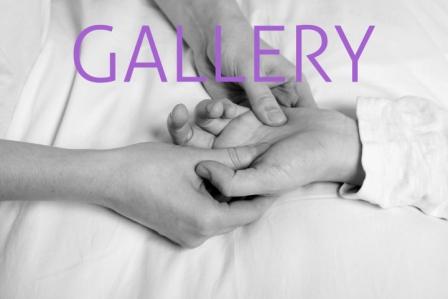 Written by Bonnie Thomson. Introduction by Maria Shlumukova. Originally published on the Edinburgh Shiatsu Clinic website in September 2013. If you’re suffering from anxiety you may think “Oh, I am constantly aware! I wish I was less mindful of all the stuff I’m thinking about/ feeling! ” It’s a fair point, but the awareness you are experiencing may have a very narrow, critical focus. Imagine you’re having your morning cup of tea or coffee. Have you thought about what you feel like having before making it? Noticed the steam rising from the cup? Appreciated the first sip? Or did you spend the entire time milling over just how tired you are, what aches and what “gifts” today is going to chuck at you? Exercising mindfulness can help you be more engaged in your own life experiences and the rich world around you. It may also stop you from scolding yourself with that steaming tea! A friend of mine once shared the benefits of mindfulness in managing his anxiety attacks. Becoming more aware of his own emotional and mental states has helped him to recognise the symptoms of an anxiety attack before it took over completely. He now views anxiety as something he experiences rather than something he is. This allows a degree of freedom, a window of opportunity to act.
What is mindfulness? This is not a mystical concept – just complete engagement in the present moment. It’s a state where you are not thinking, reflecting, judging, or deciding, but are instead simply experiencing things. It has roots in Buddhist philosophy and has been gaining widespread attention in the treatment of anxiety disorders including Generalised Anxiety Disorder, as well as promoting healthy lifestyle. What we think, the things we do, how busy we feel and how our body responds to all these demands shapes our brain. Slowing it all down with meditation changes not only how we feel, but changes the neural pathways in our brain. It is like acquiring a skill but what is really happening is that we are reshaping our brain. Mindfulness exercises for everyday life Whilst mindfulness is something you can use in your everyday life, it’s a skill that you may need to train yourself in. The following exercises are simple and convenient, and can lead you to a deeper experience of mindfulness in your daily life. Exercise #1: Meditation Meditation brings many benefits in its own right, and has been one of the most popular and traditional ways to achieve mindfulness for centuries, so it tops the list. It becomes easier with practice, but it need not be difficult for beginners. Simply find a comfortable place, free of distractions, and quiet your mind. Basic Meditation Time Required: 5 to 30 Minutes
Exercise #2: Deep Breathing A simple way to experience mindfulness, which can be done as you go about your daily activities (convenient for those who feel they don’t have time to meditate), is to focus on your breathing. Breathe from your belly rather than from your chest, and try to breathe in through your nose and out through your mouth. Focusing on the sound and rhythm of your breath, especially when you’re upset, can have a calming effect and help you stay grounded in the present moment. Exercise #3: Listening to Music You can play soothing, slow-tempo music and really focus on the sound and vibration of each note, the feelings that the music brings up within you, and other sensations that are happening “right now” as you listen. If other thoughts creep into your head, congratulate yourself for noticing, and gently bring your attention back to the current moment and the music you are hearing. Exercise #4: Cleaning House The term “cleaning house” has a literal meaning (cleaning up your actual house) as well as a figurative one (getting rid of “emotional baggage,” letting go of things that non longer serve you), and both can be great stress relievers! Because clutter has several hidden costs and can be a subtle but significant stressor, cleaning house and de-cluttering as a mindfulness exercise can bring lasting benefits. See it as a positive event, an exercise in self-understanding and stress relief, rather than a chore. Then, as you clean, focus on what you are doing as you are doing it — and nothing else. Feel the warm, soapy water on your hands as you wash dishes; experience the vibrations of the vacuum cleaner; enjoy the warmth of the laundry as you fold it; feel the freedom of letting go of unneeded objects as you put them in the donations bag. (I also recommend adding music to the equation.) Exercise #5: Observing Your Thoughts Many stressed and busy people find it difficult to stop focusing on the rapid stream of thoughts running through their mind, and the idea of sitting in meditation and holding off its onslaught can actually cause more stress! If this sounds like you, this might be for you. Rather than working against the voice in your head, sit back and “observe” your thoughts, without becoming involved in them. As you observe them, you might find your mind quieting, and the thoughts becoming less stressful. (If not, you may benefit from journaling as a way of processing all those thoughts so you can decrease their intensity and try again.) Exercise #6: Create Your Own! You are probably now getting the idea that virtually any activity can be a mindfulness exercise, and in a way, you’re right. It helps to practice meditation or another exercise that really focuses on mindfulness, but you can bring it to anything you do, and find yourself less stressed and more grounded in the process. Resources The work of Jon Kabat-Zinn in particular has paved the way for practices that were previously the domain of eastern religions to come to the fore in an accessible western model. His books can be found at http://www.mindfulnesscds.com/books.html or in most book stores. There are a few places in Edinburgh that offer the excellent 8 week course “Mindfulness Based Stress Relief”. A trained mindfulness practitioner guides the group through easy mindfulness exercises such as concentrating solely on a raisin and how it tastes to the end of the course which is a full day of meditation and mindfulness exercises. Google “MBSR Edinburgh” to find the most up to date course offerings. Core Process therapy is a type of talking therapy/ counselling, which has mindfulness as the key value and could be great as a tool for getting to grips with anxiety. To find a therapist through UK Council for Psychotherapy go to http://members.psychotherapy.org.uk/find-a-therapist/ and narrow down by Core processing as the type of therapy offered. Shiatsu and mindfulness Along with practicing mindfulness, regular Shiatsu can be very beneficial. Shiatsu allows you to focus on the body at a deeper level and step away from the worries and endless thoughts going through your mind. It is also deeply healing, even more so than an average night of sleep, by shifting the body into the parasympathetic nervous system, which is the state in which your body heals itself and is completely relaxed (the sympathetic nervous system is our ‘fight or flight’ mode where people who experience anxiety spend much of their time). Your breathing becomes deeper and slower, the vital organs and the immune system that are usually undernourished in the stressed state get a healthy dose of vitality to give you resilience to face the inevitable pressures of life.
0 Comments
Your comment will be posted after it is approved.
Leave a Reply. |
Categories
All
Archives
March 2017
Find out more on the Shiatsu Society website.
|
|
What is Shiatsu?
Shiatsu translates as ‘finger pressure’ and is based on traditional Japanese massage. Combining acupressure, massage, flowing movement and joint rotations helps to disperse tension, reduce pain, promote relaxation and healthy functioning of the body systems (circulation, breathing, digestion etc.). Shiatsu therapists are guided by their experience & knowledge of physiology and traditional Chinese medicine and apply pressure using fingers, thumbs, palms and elbows and combine it with other techniques. |
Proudly powered by Weebly


 RSS Feed
RSS Feed
